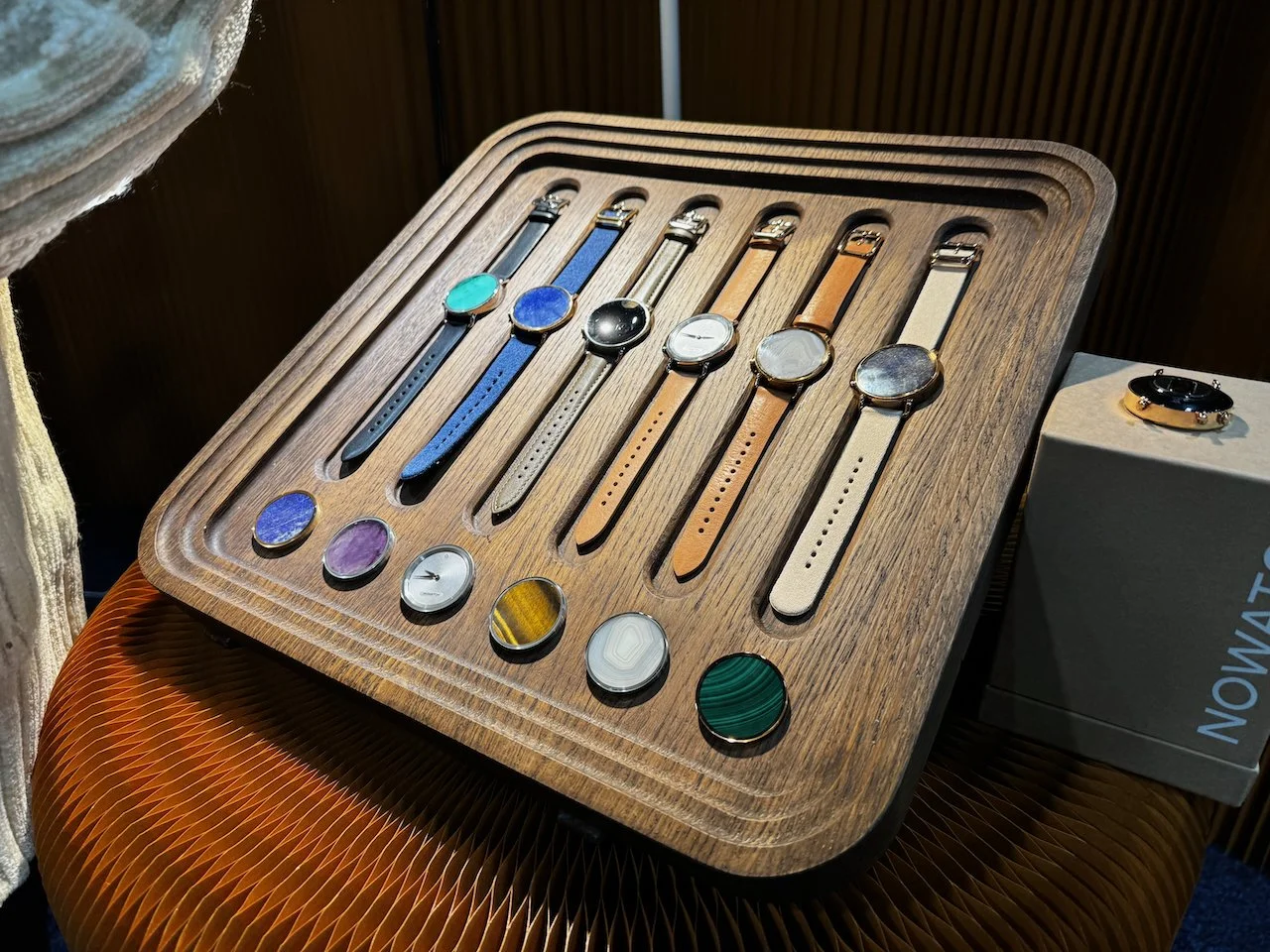Calm technology
Why is this interesting?
Far from a new trend, CES nevertheless showed that calm technology continues to evolve and find new expressions.
Key products:
Nowatch
LG transparent OLED TVs
Samsung Music Frame speakers
Skyted voice isolating mask
Evie and Samsung Galaxy health monitoring rings
Mui Board with ChatGPT integration
Doublepoint gesture control
WHSP voice control ring
Withings Beamo stethoscope
The critical questions:
How can you help people develop situational awareness without relying on displays?
What happens when you strip hard data away and you help people to develop a felt sense?
How can you communicate quietly with your customers?
The detail:
From the range of smart rings to faceless watches and transparent TVs, it's clear that companies are trying to find ways to enable their technology to be present without stealing the conversation.
Withings Beamo home stethoscope placed its display behind frosted plastic, softening the communication of the data it captures, but LG's transparent OLED TVs were the most jaw-dropping example of this trend. When off, the TV (dis)appears as a wafer-thin piece of clear plastic. But its transparent and opaque active modes (facilitated by a blockout blind that raises and lowers behind the screen) enables two further visual expressions. Samsung would probably prefer that you didn't pair it with their Music Frame speaker, which extends the TV-as-art concept into the realm of audio reproduction.
Skyted's face-mask microphone tries to tackle the challenge of being overheard in public, whether while making a private phone call or asking your AI assistant a private question. WHISPR's ring attempts to do the same thing with a super-sensitive, noise-cancelling microphone worn on the finger. And Mui integrated ChatGPT in to their Board touch display in an attempt to bring conversational AI to the kitchen.None of these are a conclusive answer to the question of how to have more discrete interactions with our devices, but they are signals among the noise.
The discrete and intuitive gesture control that arrived with the Apple Vision Pro and the latest Apple Watches is starting to spread, with Doublepoint Technologies bringing the capability to devices running Google's Wear OS.
And finally, the Evie ring and NoWatch -- present at the show for a couple of years now -- joined Oura, Amazfit, Zikr and industry giant Samsung with their Galaxy ring in offering devices that discretely capture the wearer's health data.
Unlike a typical smartwatch, these devices don't present health data for immediate analysis and comparison on a screen, but rather capture it in an ambient way so that it can be assessed at a later date.
NoWatch shies away completely from presenting hard numbers in its app, focussing on helping the wearer develop a felt sense for their wellbeing. This points to an interesting shift away from the quantified self which can lead to obsessive tracking and measuring of the data.
To explore how this theme might inspire and inform your design strategy, get in touch!
Or sign up here to download the full CES 2024 Report, with over 7,800 words of in-depth commentary and over 100 images and videos.

